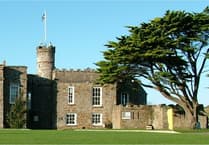THE Boundary Commission for England (BCE) has published its final recommendations for new constituency boundaries, including the controversial ‘Devonwall’ — a cross border constituency named Bideford, Bude and Launceston.
This follows submission of the BCE’s final report to Government last week, and that report now being presented to Parliament.
The commission has now fulfilled its statutory responsibility, and submission of the report and its publication ends the commission’s involvement in the 2018 Boundary Review.
Secretary to the commission, Sam Hartley, said: “The recommendations we’ve published mark the end of a thorough and consultative process to build the new map of constituencies. We’ve travelled the country, taken account of over 35,000 public comments, and heard many impassioned views about how best to reflect local communities in our recommendations, while ensuring that constituencies are all much more equally represented.
“We’re confident that the map we propose is the best match of the legal rules Parliament have set us. It’s now up to Parliament to decide whether these boundaries will be used at the next general election.”
The Government must now make arrangements for the commission’s recommendations to be voted on by both Houses of Parliament. It is for the Government to decide when to do so.
The final recommendations can be viewed at www.bce2018.org.uk
The ‘Devonwall’ constituency of Bideford, Bude and Launceston would also include Holsworthy, with an electorate of 71,465.
In its initial proposals, the BCE said: “It is not possible to propose a whole number of constituencies with electorates within the permitted electorate range within the County of Cornwall and the Isles of Scilly. Consequently, a key consideration when developing proposals in this sub-region was identifying the most appropriate point at which to propose the necessary cross-county boundary constituency between Cornwall and Devon.
“We decided that the most suitable point at which to cross the boundary is in the north of both counties, rather than traversing the River Tamar between Plymouth and Saltash, at which point the river, notwithstanding the bridge, presents a far more significant boundary between the two counties.
“We named this constituency Bideford, Bude and Launceston, reflecting the names of the three largest towns in the constituency. This constituency stretches along the South West Coastal Path from Port Isaac Bay to Bideford Bar and comprises nine wards that are currently included in the North Cornwall constituency and 18 wards that are currently in the existing Torridge and West Devon constituency.
“The A39 provides a strong communication link along the north coast of the constituency, linking Bideford in Devon with Bude and Camelford in Cornwall.
“There was some support for our proposed constituencies; however, we received passionate arguments against the creation of a so-called ‘Devonwall’ cross-county boundary constituency, namely to our proposed Bideford, Bude and Launceston constituency. Many of those who opposed this proposal did not submit a counter-proposal to create five constituencies wholly within Cornwall and the Isles of Scilly, each with an electorate within the permitted electorate range. It was argued that Cornwall is a separate entity from England and should be treated in the same way as Northern Ireland, Scotland and Wales in terms of the review.
“Classifying Cornwall as a separate entity would result in at least one constituency outside of the permitted electorate range, thereby not adhering to the statutory rules. We did not receive any counter-proposals that suggested an alternative crossing of the river Tamar.
“We are sympathetic to the arguments against a cross-county boundary constituency between Cornwall and Devon (the Bideford, Bude and Launceston constituency). However, our options for Cornwall are limited due to statutory rules, which make it impossible to create a sub-region for Cornwall alone.
“We consider that no new or compelling evidence has been received to modify this proposed constituency that would address the local concerns and at the same time reflect the statutory criteria. Having considered the suggestions for alternative constituency names we have decided not to modify any of the revised proposal constituency names in this sub-region.”
Final recommendations also include the extension of the South East Cornwall constituency to include the wards of Altarnun, and Stoke Climsland, from the existing North Cornwall constituency.




Comments
This article has no comments yet. Be the first to leave a comment.